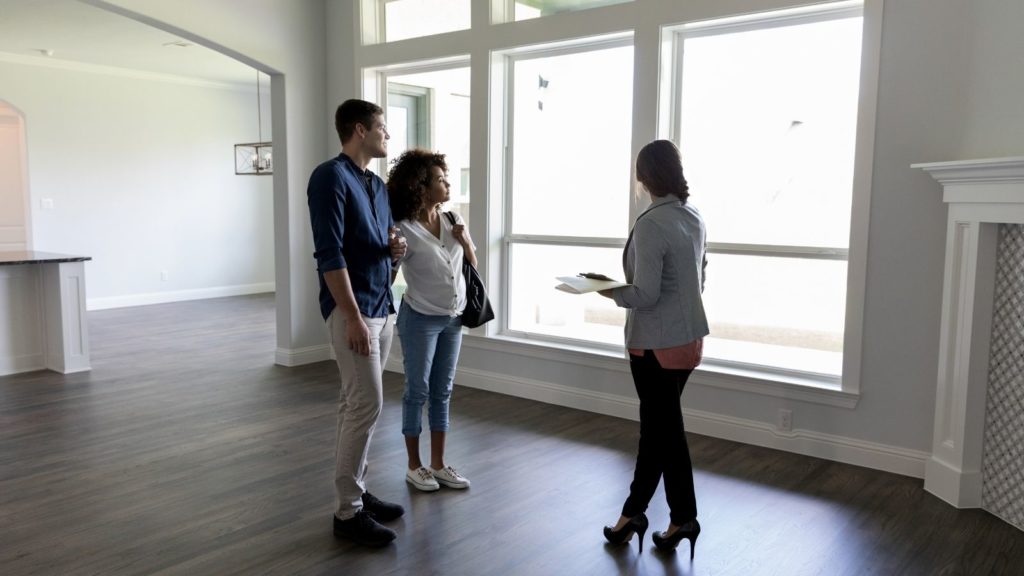Selling a house with unique challenges, such as proximity to power lines or freeways, requires a strategic approach to highlight its true potential. In this context, the key lies in accentuating the property’s strengths and implementing smart marketing techniques to attract the right buyers. By focusing on the positive aspects of the home, like its interior features, community amenities, or even the convenience of location for commuting, sellers can shift attention away from the less desirable attributes. Emphasizing the value these features bring to the table, coupled with competitive pricing and creative staging, can make all the difference in showcasing how what might seem like a drawback can be an advantage to the right buyer.

Understanding the Challenges
The initial step in successfully selling a house with inherent challenges is to fully grasp how these issues might affect the sale. Properties near power lines or freeways face unique concerns from potential buyers, including worries about noise pollution, safety, health risks, and privacy. These apprehensions can influence a buyer’s perception, potentially devaluing the property in their eyes before they even step through the door. Recognizing and addressing these concerns head-on is crucial for setting the stage for a successful sale.
Noise pollution from freeways is a common deterrent, as it can affect the tranquility of the home environment. Similarly, power lines are often associated with health risks despite a lack of conclusive scientific evidence to support these fears. Additionally, both features can impact the aesthetic appeal of a property and raise concerns about privacy and safety. Understanding these challenges is the first step toward mitigating their impact on potential buyers.
To navigate these issues effectively, sellers should consider researching or consulting with experts to gather facts to help dispel myths, particularly about health risks associated with power lines. For instance, providing potential buyers with up-to-date research or information from reputable sources can help alleviate health-related fears.
Another aspect to consider is the potential impact on property value. While these challenges might necessitate a pricing strategy that acknowledges the property’s unique circumstances, it’s also essential to understand how similar properties in the area have been affected. This involves analyzing market trends and comparable sales to gauge how much of an impact these features have on selling prices and how long these homes typically stay on the market.
In addressing these challenges, sellers can explore possible enhancements or mitigating measures to counteract the negative aspects. For example, installing high-quality windows can reduce noise from a nearby freeway, and strategic landscaping can provide privacy and visual barriers to power lines.
Case studies or examples of similar properties can be particularly enlightening. Sellers who successfully navigate these challenges often employ creative solutions and strategic marketing to highlight the positive aspects of their homes. For instance, a property near a freeway might emphasize easy access to transportation routes as a benefit for commuters.
By understanding the specific concerns associated with their property’s challenges, sellers can better prepare to address these issues with potential buyers. This preparation involves acknowledging and mitigating the concerns and strategically positioning the property to appeal to the right audience. The goal is to shift the focus from the drawbacks to the unique benefits and opportunities the property offers, creating a more favorable impression and increasing the chances of a successful sale.
Highlighting the Positives
When selling a house with unique challenges, such as being close to power lines or a freeway, it’s essential to pivot the focus toward the property’s positive attributes. This strategic shift requires identifying and amplifying the aspects of the home that can overshadow its less desirable features. Highlighting the positives draws attention away from potential drawbacks and helps potential buyers envision the unique benefits of living in the home.
One practical approach is to showcase the interior qualities of the house that make it a comfortable and inviting space. Upgrades such as modern kitchens, renovated bathrooms, energy-efficient appliances, and smart home features can boost a property’s appeal. These interior highlights can capture buyers’ interest, making the external factors seem less significant in comparison.
Beyond the physical attributes of the house, the surrounding community amenities can also play a pivotal role in attracting buyers. Features like parks, recreational facilities, schools, and shopping areas can add considerable value to the property in the eyes of potential buyers. Highlighting these amenities in marketing materials can shift the narrative to the lifestyle and convenience offered by the location, regardless of its proximity to power lines or freeways.
Professional photography and virtual tours are indispensable tools in this effort. High-quality visuals that emphasize the best features of the home and its surroundings can make a solid first impression on potential buyers. By presenting the property in the best possible light, sellers can create a compelling visual narrative highlighting the positives, making the challenges seem manageable or negligible.
Furthermore, focusing on the convenience of the location, such as easy access to major transportation routes, can turn a potential negative into a positive. For some buyers, the benefit of reduced commute times may outweigh the drawbacks of noise or visibility associated with power lines or freeways.
In essence, the art of selling a house with challenges lies in strategically highlighting its positive aspects. By carefully curating the presentation of the property to emphasize its strengths, sellers can effectively attract buyers who see beyond the challenges and recognize the true value of the home.
Strategic Pricing
Setting the right price for a house with unique challenges like proximity to power lines or a freeway is critical to the sales strategy. Strategic pricing requires a delicate balance between acknowledging the property’s challenges and recognizing its intrinsic value. This balance ensures the property is attractive to potential buyers without significantly compromising the seller’s return.
To establish a competitive price, sellers must first conduct thorough market research. This involves analyzing recent sales of similar properties in the area, mainly how comparable challenges affected their selling prices. Understanding the local market dynamics, including demand and the average time properties spend on the market, provides valuable insights into how to price a home competitively.
Adjusting the price to reflect the property’s unique challenges is essential, but avoiding undervaluing the home is equally important. Sellers should consider the cost of any improvements or upgrades that mitigate the challenges, such as soundproof windows for homes near freeways or enhanced landscaping to improve privacy around power lines. These improvements can justify a higher asking price by increasing the property’s appeal.
Moreover, sellers should be prepared for negotiation. Potential buyers may view the challenges as leverage to negotiate a lower price. A well-defined pricing strategy that leaves room for negotiation can help sellers navigate these discussions effectively. Setting an initial price slightly above the anticipated selling price can provide the flexibility needed to reach an agreement that satisfies both parties.
Finally, consulting with a real estate professional who has experience selling properties with similar challenges can offer invaluable guidance in setting a strategic price. These professionals can provide insights into how to position the property in the market and advise on pricing strategies that have proven successful in similar situations.
In summary, strategic pricing for a house with unique challenges involves a comprehensive understanding of the local real estate market, thoughtful consideration of the property’s value, and a flexible approach to negotiation. By carefully setting the price, sellers can increase their chances of attracting serious buyers and achieving a successful sale despite the challenges.

Creative Marketing Strategies
Selling a house with inherent challenges, such as proximity to power lines or freeways, demands an innovative marketing approach. The objective is to craft a narrative that addresses these challenges head-on and frames them within the context of the property’s unique value proposition. This requires a blend of traditional and digital marketing tactics tailored to highlight the home’s strengths and appeal to potential buyers who might see the property’s unique features as advantageous.
One of the first steps in a creative marketing strategy is identifying the target demographic most likely to be interested in the property’s specific features. For example, a home near a freeway might be marketed as an ideal choice for busy professionals who value easy access to transport links. Similarly, the open spaces around power lines could be presented as an opportunity for expansive gardens or as a buffer providing more privacy.
Leveraging social media platforms and online real estate listings can significantly boost the property’s visibility. These digital tools allow for sharing high-quality photos and virtual tours, which can emphasize the home’s interior appeal and any outdoor landscaping designed to mitigate the challenges. Tailored advertisements can also reach specific groups of potential buyers on these platforms, ensuring that the marketing message resonates with those most likely to be interested.
Content marketing, such as blog posts or articles that highlight the lifestyle benefits of the home’s location, can also play a crucial role. This content can address common concerns associated with the property’s challenges while showcasing the advantages, providing a balanced and positive perspective.
Events like open houses, carefully planned to highlight the property’s best features during the visit, can also be an effective marketing tool. These events offer an opportunity for potential buyers to experience the property firsthand, helping them to see past the challenges and appreciate the home’s true value.
Finally, direct mail campaigns targeting the local area or specific demographics can complement online efforts. High-quality brochures or flyers highlighting the property’s key selling points and testimonials from neighbors or previous owners about the benefits of the area can add a personal touch to the marketing efforts.
Innovative marketing strategies that focus on the property’s strengths while transparently addressing its challenges can attract a broader pool of potential buyers. By effectively communicating the property’s unique benefits, sellers can overcome initial hesitations and showcase the home as a valuable and appealing investment.
Staging Your Home for Success
Effective staging is paramount when selling a house with inherent challenges such as proximity to power lines or a freeway. The goal is to create an environment that allows potential buyers to envision themselves living in the space, thereby minimizing the impact of any external drawbacks. Staging should enhance the home’s appeal through thoughtful design, strategic layout, and attention to detail, making the most of the property’s strengths.
First, addressing the interior by decluttering and depersonalizing the space is essential. Removing personal items and excess clutter can make rooms appear larger and more inviting, allowing buyers to imagine their own lives in the home. Neutral colors and minimalistic decor appeal to various tastes, creating a warm and welcoming atmosphere.
Next, consider the flow and functionality of each room. Furniture placement should maximize the usability of the space and highlight architectural features without drawing attention to less desirable aspects of the property. For example, arranging a sitting area away from windows facing the road in a house near a freeway can help reduce noise perception and focus the attention inward.
Enhancing natural light can also play a significant role in staging. Open curtains and clean windows to brighten the space, making it feel airy and more spacious. Well-placed mirrors can amplify light and add a sense of depth to rooms, further enhancing the property’s appeal.
Addressing the exterior is just as important, especially for homes with challenges related to their location. Landscaping can provide aesthetic appeal and practical solutions to some issues. For instance, planting shrubs or trees can create natural barriers to noise and increase privacy, making the proximity to power lines or freeways less noticeable.
Finally, consider staging the outdoor living areas to showcase the property’s full potential. Comfortable seating, vibrant planters, and tasteful outdoor decor can transform a backyard into an inviting retreat, emphasizing the lifestyle that the home offers despite its challenges.
By strategically staging the home’s interior and exterior, sellers can effectively shift the focus from any external negatives to the property’s positive aspects. This approach enhances the home’s appearance and perceived value, making a compelling case to potential buyers that this is a place they can call home.
Open Houses and Private Showings
Hosting open houses and private showings plays a critical role in selling a home with unique challenges, such as proximity to power lines or a freeway. These events allow potential buyers to experience the property firsthand, allowing them to see beyond the initial concerns and appreciate the home’s value. Preparing for these showings involves strategic planning and attention to detail to ensure visitors leave a positive impression.
For open houses, timing and presentation are critical. Schedule the event during times when the impact of external challenges is minimized. For example, hosting an open house when traffic is lighter can help reduce noise from a nearby freeway. Similarly, ensuring the property is pristine, with all lights on and playing pleasant background music, can create an inviting atmosphere that draws attention away from less desirable features.
During private showings, personalization becomes even more critical. Tailor the experience to the interests and concerns of the potential buyer. If they have expressed worries about noise, demonstrate the effectiveness of soundproofing measures you’ve implemented. Highlighting aspects of the property that directly address their needs can help build a strong, positive connection to the home.
Both open houses and private showings should emphasize the home’s strengths. Whether it’s the spacious layout, modern amenities, or beautifully landscaped garden, make sure these features are front and center. Guided tours can help direct attention to these positives with a narrative that frames challenges as manageable or beneficial in certain contexts.
Effective communication is also vital during these events. Be prepared to answer questions honestly and provide factual information about any concerns, such as the impact of power lines on health or how freeway proximity enhances connectivity and access to amenities. Demonstrating knowledge and transparency can build trust with potential buyers, making them more comfortable with making an offer.
Lastly, follow-up after these events is crucial. Reach out to attendees with additional information or answers to questions they may have had, and express your availability for further discussions. This proactive approach shows potential buyers that you are committed to ensuring they have all the information they need to make an informed decision.
By carefully planning and executing open houses and private showings, sellers can effectively showcase their property in the best light, turning potential challenges into opportunities for connection and persuasion.

Legal and Disclosure Requirements
Understanding and adhering to legal and disclosure requirements is crucial when selling a house with unique challenges, such as proximity to power lines or freeways. These regulations protect both the seller and the buyer, ensuring that all parties are fully informed about the property’s condition and any factors that could affect its value or livability.
In most jurisdictions, sellers are required to complete a disclosure form that outlines any known defects or issues with the property. This includes physical defects and external factors, such as noise pollution from a nearby freeway or potential health concerns related to power lines. It’s essential to be thorough and honest in these disclosures, as failing to disclose known issues can lead to legal ramifications, including lawsuits for misrepresentation or fraud.
The specific requirements for disclosures can vary significantly from one area to another, so it’s essential to consult with a real estate professional or legal advisor familiar with local laws. They can guide what needs to be disclosed and how to properly document this information to protect yourself legally.
Transparency in disclosures fulfills a legal obligation and builds trust with potential buyers. By openly sharing information about the property’s challenges, sellers can mitigate concerns and demonstrate honesty and integrity. This approach can make buyers more comfortable with the purchase, knowing there are no hidden issues.
Additionally, providing potential solutions or mitigations for the disclosed challenges can be beneficial. For example, if noise from a freeway is a concern, disclosing any soundproofing measures taken or suggesting potential improvements can help assuage buyer fears.
Finally, it’s worth noting that some buyers may seek out properties with particular challenges, seeing them as opportunities for negotiation or improvement. By fully disclosing all relevant information, sellers can attract a broader range of potential buyers, including those looking for a deal or with the vision to see beyond the challenges.
In summary, adhering to legal and disclosure requirements is critical to selling a house with unique challenges. By being transparent and providing detailed information about the property, sellers can navigate the sale process more smoothly, avoid legal pitfalls, and foster a sense of trust with potential buyers.
Leveraging Professional Help
Successfully navigating the sale of a house with inherent challenges, such as proximity to power lines or a freeway, often requires more than just a keen understanding of the market and a flair for presentation. It demands a comprehensive approach combining strategic pricing, creative marketing, practical staging, and deep knowledge of legal and disclosure requirements. While sellers can undertake many of these tasks independently, the complexities underscore the value of professional assistance.
Engaging with experienced real estate professionals, from agents to home inspectors and legal advisors, can provide sellers with the expertise necessary to effectively address their property’s unique challenges. Real estate agents, in particular, bring to the table a wealth of knowledge about the local market, including what potential buyers are looking for and how to reach them. They can also offer invaluable advice on pricing strategies and marketing techniques that have proven successful for similar properties.
Home inspectors can help identify any issues that must be addressed before the sale and suggest improvements that could enhance the property’s appeal. Legal advisors, on the other hand, ensure that all disclosures are completed accurately and in compliance with local laws, protecting sellers from potential legal complications.
For sellers facing the task of selling a home with specific challenges, the support of these professionals can make a significant difference in the sale’s outcome. They help highlight the property’s best features and navigate the complexities of the real estate market, from listing to closing.
If you’re considering selling your home and facing challenges related to its location or other unique features, reaching out for professional guidance can be the first step toward a successful sale. Contact me to explore how we can work together to showcase the true value of your property and find the right buyer, turning potential obstacles into selling points. Let’s collaborate to make your home stand out in the market and achieve the best possible outcome.
Contact Jackie Ruden Realty Team
Give us a call today at (435) 272-7710 to set up a time to discuss your current and future real estate goals in regards to buying a home or buying a property in trust. We look forward to working with you to make your goals a reality.





